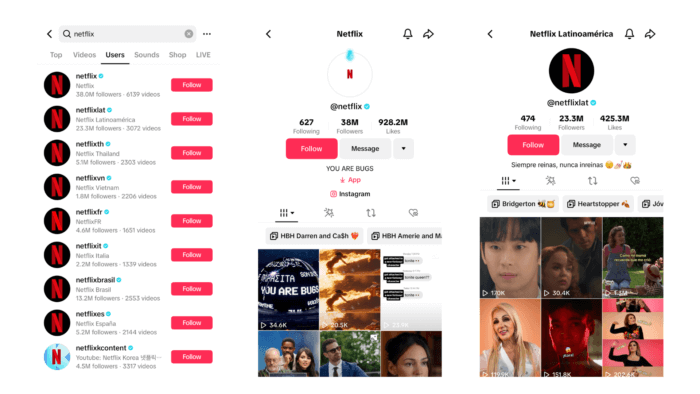There’s no doubt that social media has transformed the way brands connect and engage with their audience. Yet, amidst the likes, shares, and retweets, there’s an underlying question: what’s the return on investment of all this social media activity?
Sure, the buzz is exciting but, as businesses, we need to dig deeper. Understanding the ROI of our social media efforts is essential for strategic decision-making and maximizing our brand’s potential. But where to start? We’re breaking down how to measure and maximize your social media ROI. Let’s get to it.
What Is Social Media ROI?
Social media ROI, or return on investment, is a crucial metric for assessing the effectiveness of your social media efforts. Put simply, it measures the return a company gains from the resources it invests in social media marketing. This return can come in various forms, including increased brand awareness, engagement, website traffic, lead generation, and, ultimately, conversions and sales.
Admittedly, measuring social media ROI has its difficulties. Challenges like attributing conversions to specific social media activities or quantifying the impact of engagement complicate the process. However, with the right tools and strategies, it’s definitely achievable. Here’s a step-by-step guide to help you navigate this process.
How To Calculate the ROI of Your Social Media Efforts
1. Define Your Goals
Before diving into ROI calculations, it’s crucial to establish clear goals. What do you hope to achieve through social media? Are you aiming to increase website traffic, generate leads, boost sales, or enhance brand awareness? Each goal requires a different set of metrics to measure success. By clarifying your objectives, you’ll have a clear roadmap for tracking ROI.
2. Identify and Track Relevant Metrics
The next step is to identify and track the relevant metrics that align with your goals. Here are some key metrics to consider:
- Engagement metrics. Likes, comments, and shares indicate how well your content resonates with your audience. High engagement rates typically indicate a strong connection, which can translate into brand loyalty and increased sales.
- Website traffic. Click-through rates and referral traffic reveal how effectively your social media efforts drive visitors to your website. Increased website traffic can lead to higher conversions and ultimately contribute to revenue growth.
- Lead generation. Form submissions, email sign-ups, and other lead generation metrics let you know whether your social media campaigns are capturing potential customers’ interest and moving them through the sales funnel.
- Conversions. Track which sales, downloads, and other desired actions are directly tied to your social media activity. This is the most straightforward way to determine the impact your social strategy has on your revenue and business goals.
While this step often consumes the most time and effort, it’s crucial for accurately calculating the ROI of your social media efforts. Using analytics tools in this stage can be a huge help since they streamline the process of collecting, reporting, and analyzing your data.

Start analyzing your social with a free Rival IQ trial.
Get my free trial3. Assign Monetary Values
Once you’ve collected data on key metrics, it’s time to assign monetary values to these metrics based on their impact on your bottom line. While some metrics like sales and downloads have direct monetary value, others may require a bit more creativity to quantify.
For example, you can calculate the value of website visitors based on their likelihood of converting into a paying customer. Consider factors such as conversion rates, average order value, and customer lifetime value to assign meaningful values to your social media metrics.
4. Calculate Total Revenue Generated
Once you’ve assigned monetary values to your metrics, it’s time to calculate the total revenue generated from your social media activities. To do this, sum up the revenue directly attributable to social media activities. This may include revenue from social media-driven sales, leads converted into customers, or any other measurable impact on revenue generation.
5. Calculate Total Investment Costs
Next, it’s time to calculate the costs of your social media efforts. Calculate the total investment incurred in your social media marketing efforts, including resources, time, and advertising spend. Don’t forget to consider factors such as employee salaries, agency fees, content creation costs, and ad campaign budgets.
6. Calculate ROI
Now that you have all the necessary data, it’s time to crunch the numbers. Subtract your costs from your revenue. The resulting difference represents the net gain or loss from your social media efforts.
The below formula helps standardize ROI calculations by expressing it as a percentage, allowing for easy comparison across campaigns and channels:
ROI = ((Revenue − Cost) / Cost) x 100
A positive ROI indicates that your social media activities are yielding returns greater than the costs incurred, while a negative ROI suggests that current strategies need to be reassessed.
7. Analyze and Repeat
After calculating ROI, analyze the results to gain insights into the effectiveness of your social media strategy. Identify areas for improvement and refine your approach accordingly. Finally, be sure to regularly revisit this process as your ROI will change over time as strategies, consumer behavior, and market trends shift.
Four Ideas for Improving Your Social Media ROI
Calculating your ROI is only the beginning. If you want to improve the ROI of your social media efforts, here are some actionable strategies that can help you achieve this goal effectively.
Align Your Content Strategy With Business Goals
Whether it’s driving brand awareness, increasing website traffic, generating leads, or boosting sales, your social media presence should contribute to the overarching mission.
Take MVMT’s Instagram, for instance. A quick scroll through its profile and it’s clear that the brand is laser-focused on driving its audience towards making a purchase. Nearly every post showcases its products, as well as a straightforward call-to-action bar — “View shop” — at the bottom. Even its captions have a sales focus, often announcing its latest promotion.

By crafting content that resonates with your audience and directs them towards specific actions, you can ensure that your social media efforts contribute directly to your bottom line. Just remember to regularly revisit your business goals and adjust your content strategy accordingly to stay on track.
Dedicated Accounts for Different Audiences
Understanding your audience is key to delivering content that resonates with them. Consider segmenting your audience into distinct groups based on demographics, interests, etc., and creating dedicated accounts to appeal to each.
It could be as simple as one extra account, as MVMT did on Instagram with its “For Her” profile. Or it could be as extensive as Netflix’s long list of location-specific TikTok accounts.

Creating dedicated accounts for different audience segments allows brands to tailor their content and messaging to better resonate with each group. This targeted approach can lead to increased ROI as it ensures that each audience receives more relevant communication, driving higher levels of interaction and conversion.
Leverage User-Generated Content
Another great strategy to enhance your online presence and boost ROI is user-generated content (UGC), or content created and shared by consumers. Incorporating UGC into your social strategy not only saves you time and resources but also offers social proof, showing prospective customers the real, positive experiences of existing users.
GoPro is well-known for its UGC campaigns, with its “Photo of the Day” challenge actively encouraging customers to go out into the world and create stellar content with its cameras.

The outcome? Plenty of user-generated content that GoPro can readily share on social, sparing the brand the effort of creating content from scratch. Plus, by including product details in the captions, GoPro strategically promotes the benefits of its products to a wider audience.

Regularly Monitor, Analyze, and Adapt
Finally, it’s essential to continuously review your performance, analyze key metrics, and adapt your strategy accordingly.
Regularly monitor your social media metrics to gauge the effectiveness of your efforts. Use social analytics platforms, such as Rival IQ, to track and analyze key metrics such as engagement, reach, and audience growth across multiple social channels. Find out which channels and what kinds of posts are generating the most engagement and tailor your investment accordingly.

In addition to social analytics, general analytics tools like Google Analytics provide deeper insights into website traffic, conversions, and the correlation between social media efforts and website performance. Meanwhile, CRM systems like Salesforce can be used to track customer interactions, lead generation, and conversion rates attributed to your social strategy.
All in all, by regularly reviewing your analytics data and identifying trends and patterns, you can gain valuable insights into what’s working and what’s not. This allows you to make informed decisions and optimize your strategy for maximum ROI.
The Wrap Up
For businesses, using social media should be about more than just likes and shares — it should be about driving tangible results. By understanding the impact of your social media strategy on your bottom line, you can make smarter decisions, allocate resources more effectively, and have social media become a powerful driver of your growth and success.

Ready to review your social performance? Here's how to conduct a social media audit.
Learn more